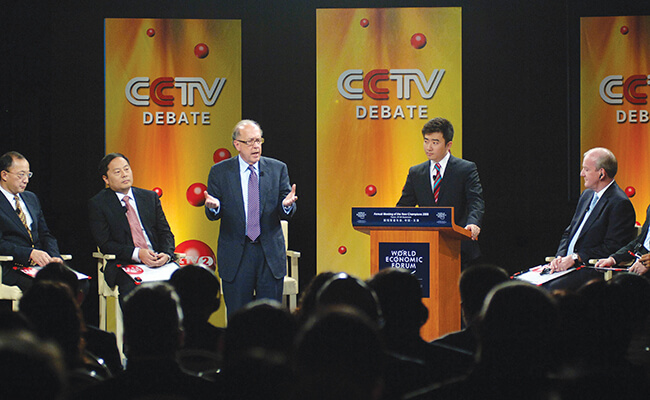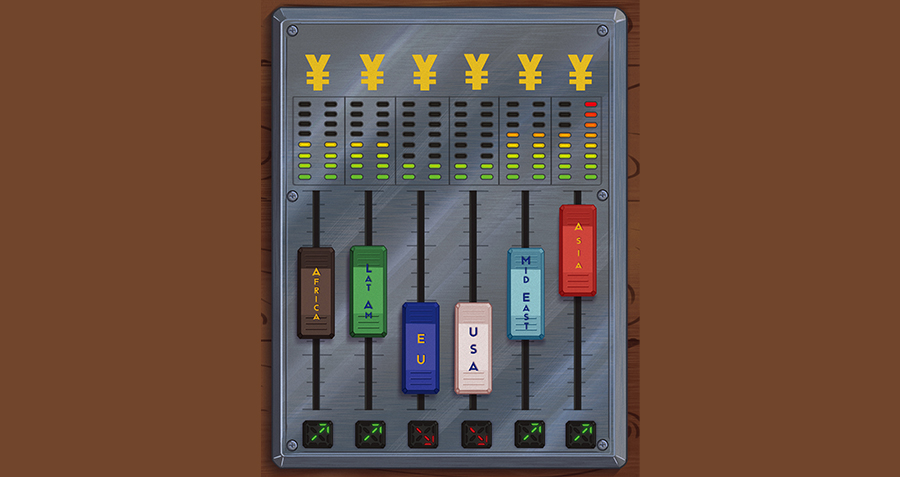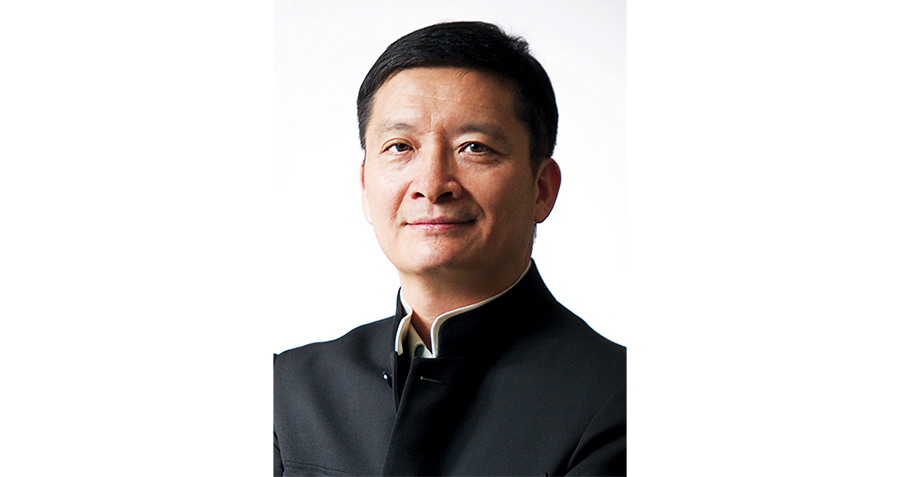Stephen S. Roach, former Chairman of Morgan Stanley Asia, discusses the dysfunctions of the China-US relationship
The rapid deterioration in relations between China and the United States over the past 12 months has left many scratching their heads and wondering how we got here. Stephen S. Roach is not one of those people.
A former Chief Economist of Morgan Stanley, Chairman of Morgan Stanley Asia and currently Senior Fellow at Yale University’s Jackson Institute for Global Affairs, Roach has been watching the development of Chinese-US relations closely for more than three decades. For him, a tariff war between the world’s two largest economies was as predictable as it is harmful.
In his 2014 book, Unbalanced: The Codependency of America and China, Roach warned that growing bipartisan anger toward Beijing in Washington was making “the unthinkable Bad Dream” of a Sino-US trade war a real possibility. The reason did not lie with the policies of a particular leader, but the pathologies of the economic relationship itself. Like two needy partners, America and China had become trapped in an economic embrace that was unsustainable for both of them.
In this interview, Roach explains how this codependency developed, and what the two economies need to do to avoid a messy divorce.
Q. Why did you decide to use the concept of codependency to describe the US-China relationship?
A. After spending most of my career analyzing and writing about the United States, I went on to head up the global economics team at Morgan Stanley. When the Asian financial crisis came about in the 1990s, China was a country that I knew little about in-depth. But I had a gut feeling that China would hold the key to the end game of that crisis, so I started going there every other month. It quickly became clear to me that China was not Indonesia or Thailand but was handling and managing the crisis very differently. As time went on, I became fascinated by China.
During the 2000s, especially after the accession of China to the World Trade Organization, it struck me that the story was more about the two-way relationship [between the US and China] than about either economy. While export-led China had a strong reliance on the American consumer for its growth, the US consumer needed low-cost goods to make ends meet. The US did not save because of budget deficits and problems with household savings, so we needed surplus savings from abroad to grow. That gave rise to a balance-of-payments deficit, which, in turn, spawned a multilateral trade deficit with over a hundred countries in order to attract the foreign capital. China—largely because of its competitive cost structure—quickly became our most important foreign supplier.
Finally, it became clear in the wake of the 2008 financial crisis that while US domestic demand was struggling, we turned increasingly to external demand, exports in particular, to make up for this weakness. The NAFTA partners, Canada and Mexico, were obviously our two most important export markets, but China quickly emerged as our third-largest and fastest-growing export market. So, not only did China rely on the US as a major source of external demand, but the US developed an increasing reliance on Chinese saving and demand for American products. I dubbed this two-way dependency as codependency.
Q. Are there deeper historical roots to the codependent relationship between the US and China?
A. It was a natural process that started in the late 1970s, when both economies were struggling. China was struggling in the aftermath of two decades of instability, and the economy was in tatters. China was desperate for a new growth solution, and Deng Xiaoping was able to appreciate the role that external demand could play in driving reform and opening-up the economy.
In the meantime, the US economy was struggling through a very tough period of stagflation—weak growth and rising inflation—and it needed new answers for a tired and disappointing growth model. So, America, the ultimate consumer, turned to China, the ultimate producer, at a time when both economies were in a state of need.
This is how I made the leap from the psychology of codependency to the economics of codependency. In the human context, it is usually two needy partners that rely on each other for external feedback to compensate for that loss of self at their core. Typically what happens in a psychological relationship is that one partner decides to break it off and start to grow on his or her terms, and the other partner, who is unwilling to change or is in denial over the loss of support from the first partner, feels scorned and lashes out in response. That is exactly what is going on right now: we’re in what I would call the classic conflict phase of codependency.
Q. Many Western commentators discussing the state of China-US relations are asking the question “who needs whom more?” The logic of the codependency framework suggests that it is in fact the US that is the more dependent partner.
A. Yes, the US is insistent that it feels no pain from the frictions that have emerged because of the tariffs and other issues. And it points to some short-term developments like the decline in the Chinese stock market and the slowdown in the growth in gross domestic product (GDP) as an indication that China is hurting more than America. Under that presumption that America is so much stronger than China, then it is a great time, argues the Trump administration, to intensify pressure. Sadly, I think that is a very short-term assessment of the risks—a myopia that could come back to haunt the United States in the years ahead.
Q. You argue in the book that the US needs to go through a period of readjustment to move on from its codependent relationship with China. Why has the US, up to now, been so resistant to this idea?
A. I think the US is, unfortunately, stuck in a growth model that has relied excessively on the dollar’s role as a reserve currency and the related ability of America to attract the surplus savings of countries like China, Germany and Japan. It has not really faced the consequences of its, ultimately quite destructive, erosion of longer-term saving. Even though the visible manifestations of our shortfall in saving is showing up in the form of pressures on our manufacturing sector, the problems we have in our educational system, and the crumbling infrastructure, we just don’t feel compelled to address that.
In fact, Congress and the Trump administration a year ago enacted reckless outsize tax cuts at a time of improved economic activity, which will push our savings rate even lower. It is already as low as any leading country has ever had.
Q. You point out in the book that the US will need to increase exports, especially of high-tech products, if it is to rebalance its economy in the long run. Some see China’s industrial strategy Made in China 2025 as a threat to America’s ability to do that. Do you agree with that view?
A. This bears directly on some of the more contentious issues of the current economic conflict between the United States and China: intellectual property rights, technology transfer, industrial polices like Made in China 2025, cyber hacking.
We have imposed tariffs to deal with these issues as well as with our outsize bilateral trade deficit. But there is a serious flaw in that logic. In 2017, for example, the US had merchandise trade deficits with 102 countries. This is a multilateral problem directly traceable to our saving issues. There can be no bilateral fix for a multilateral problem.
The trade war is more about the perceived threat that China poses to—in the words of one of the most absurd trade advisers we have ever had, Peter Navarro—the “crown jewels” of America’s competitive prowess. This is the essence of the so-called Section 301 investigation conducted by US Trade Representative (USTR) Robert Lighthizer that was published in March 2018, and has provided the foundational “evidence” for the initiation of the tariffs.
Q. To what extent do you think the trade war is an effective tool to deal with those deeper issues?
A. Unfortunately, the Section 301 allegations are lacking some important, fundamental analytical and empirical verification. For example, the USTR accuses China of being unique in embracing industrial policies like Made in China 2025. However, it is important to understand that other countries, including Germany, Japan and even the US through its Pentagon-sponsored R&D efforts, have also practiced industrial policies in one way or another.
On other issues raised in the Section 301 report, such as allegations of forced technology transfers through joint ventures, we need to be scrupulous in examining the evidence behind these charges.
Related to that are all these numbers floating around about how much IP China has stolen from the US. Recently, I looked at the evidence offered in support of those allegations. Unfortunately, given the gravity of the purported transgressions, this is some of the weakest evidence I have ever seen. And yet, this is the evidence that is used in the court of public opinion to support the notions that China every year steals between $200 billion and $300 billion of our intellectual property rights. There is really nothing to support estimates of that magnitude.
I will just give you one snippet of my critical assessment of this so-called evidence. The only hard data point that the IP Commission has in terms of the magnitude of IP theft in the US is that the US Customs and Border Patrol confiscated $1.35 billion of counterfeited data crossing the border in 2014. Then, they use a bunch of ridiculous models put together by consultants and the OECD to blow up that $1.35 billion figure into $200 billion to $300 billion of alleged IP theft by China.
Q. Hank Paulsen recently warned of the risk of an “economic Iron Curtain” descending between China and the US if relations do not improve. To what extent do you think that is a possibility?
A. I agree with that concern. We’re in for a fundamental, long-term conflict. These issues—technology, innovation and industrial policy—are core issues for both countries. They both feel strongly about the role that technology and innovation play in shaping and defining their goals.
But one thing is very different for China: China is right at the threshold where most economies fall into what’s called the middle-income trap. They grow very quickly for a considerable period largely drawing on technologies imported from the more advanced economies. To move beyond the middle-income threshold, they need to shift from imported to indigenous innovation. And that is what all this is about for China: both the Made in China 2025 and the AI 2030 plans are focused on the need to go to indigenous innovation. Beijing can hardly be expected to back down from that core strategic objective.
Q. How do you see Europe fitting into this picture? The US-China relationship has its own unique characteristics, but many of the issues between the two countries affect Europe too.
A. Europe has its own agenda and value propositions. One thing that is clear in contrasting Europe with the United States is that European leaders are much more comfortable using state-directed industrial policies for competitive purposes. Germany is the powerhouse of Europe, and whether it is decades of support for SMEs or Industrie 4.0 that is driving its innovation-based breakthroughs in advanced manufacturing, Germany is just as wedded to this type of state intervention shaping competitiveness as China is.
If Europe has issues with Chinese trade practices or other types of violations of the rules-based norms that exist under the WTO framework, I think it will be more willing to use the dispute mechanism of the WTO to address these concerns than the US would be with its unilateral tariffs.
Q. As you pointed out in a recent Project Syndicate article, China has been a major buyer of US Treasurys for years, but it too could soon start running a deficit. How would that affect the US-China relationship?
A. That is probably inevitable. We have seen some statistical evidence of that during the opening months of 2018. China is slowly but surely going from a model that draws on surplus savings to fund infrastructure and exports to a different approach that absorbs the surplus saving in order to fund a safety net that its consumers and families need to be more active drivers of internal demand. If China continues to go down that road, its current account could easily go into deficit and stay there for quite some time.
That has consequences for the US because China, as the world’s largest surplus saver, has played an important role in buying the Treasurys—precisely what a savings-short America needs to fund its chronic budget deficit.
Q. Can America continue to fund its deficit without China buying up large volumes of US Treasurys?
A.We will fund the deficit; the question is on what terms. To the extent that we don’t have savings at home, then there are consequences as to how that external funding occurs, consequences that may have an impact on the dollar and interest rates relative to foreign interest rates. We saw a bit of that in late 2018 in the backup in longer-term Treasury yields, but hardly a sharp increase that might have the potential to tip the US economy back into recession.


















